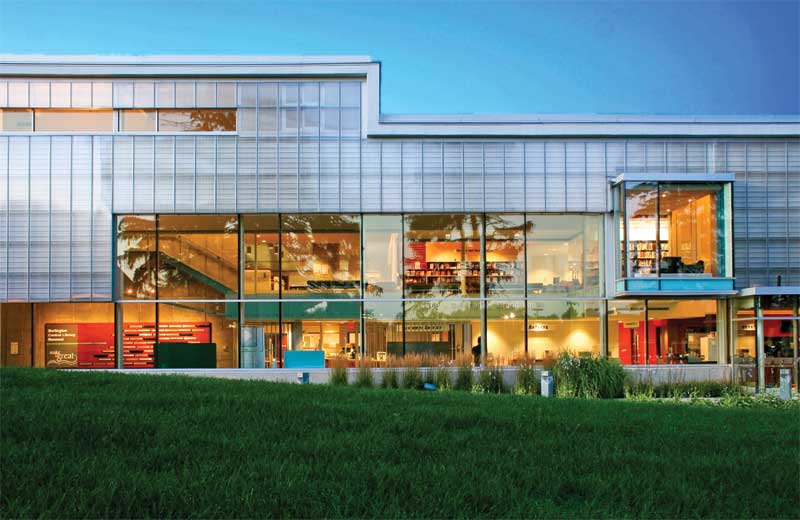How to avoid common channel glass pitfalls

Overlooking design constraints
Channel glass systems are heralded for their design adaptability. They consist of self-supporting, U-shaped cast-glass channels mounted in a perimeter frame—often, extruded aluminum. The versatile segments are available in varying colours, translucencies, and textures, and are cast in up to 7-m (23-ft) lengths. They can be installed in both vertical and horizontal orientations in exterior and interior applications, as well as in curved and serpentine configurations.
While channel glass’s vast array of configurations provides designers with exceptional flexibility, not all permutations are available in all combinations. Understanding product boundaries upfront can save critical time and energy during the design phase.
Dual-glazed channel glass planks must be installed in standard framing
Dual-glazed channel glass planks are always mounted in a standard aluminum perimeter frame. This allows the channels to be set in an overlapping fashion to provide extra strength. It also helps reduce heat transfer by creating an insulated dead air-filled space and thermal gap (Figure 2). Since single-glazed applications are not limited to standard framing, they can help expand design freedom, as discussed in greater detail later in this article.
Horizontally hung channel glass segments are typically dual-glazed and limited to 4-m (13-ft) lengths
As mentioned, unsupported cast-glass channels can span up to 7 m without interruption in vertical applications. However, horizontally hung channel glass segments are typically dual-glazed and limited to 4-m (13-ft) lengths, or the length specified in the manufacturer’s or supplier’s wind load charts for high-design-load areas (Figure 3). This precaution ensures horizontal channel glass segments have adequate structural support. In some instances, it is possible to extend the width beyond what is normally achievable. This often requires custom wind/dead load clips at the intermediate point.

Channel glass in curved or serpentine configurations must be installed vertically
To create a curved or serpentine channel glass system, the aluminum framing is stretch-formed into a radius. Glazing subcontractors then place the cast-glass channels around the framing to form a curved or serpentine configuration. While the planks can be dual- or single-glazed depending on project needs, they can only be installed vertically. The cast-glass channels would need to be bent to achieve a curve in a horizontal configuration, which is not done.
While elliptical shapes are popular, the geometry of a true ellipse is not something most stretch-formers can economically produce. Instead, designing the shape as individual arcs with the minimum number of unique radii required to approximate the true elliptical shape is often preferred by many material suppliers and will provide designers with a similar esthetic at lower cost.





